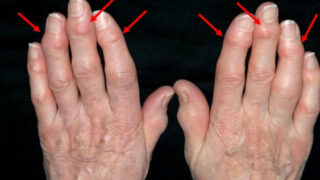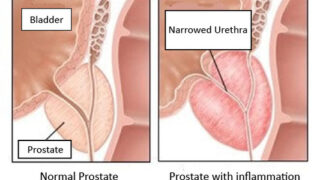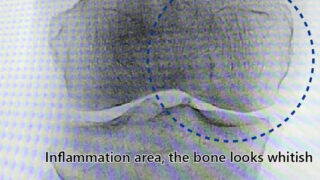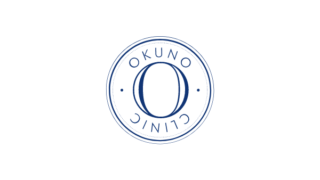Table of Contents
Q What is a frozen shoulder?
Have you ever experienced shoulder pain or stiffness that made it difficult to move your arm? If so, you may be suffering from frozen shoulder, also known as adhesive capsulitis.
At Okuno Clinic, we often receive inquiries about how to deal with frozen shoulder. This condition affects approximately 2-5% of the general population and can be quite debilitating.
In this article, we will explore the symptoms, causes, and treatment options for frozen shoulder, as well as some exercises that may help alleviate the discomfort.
Symptoms of Frozen Shoulder
The symptoms of frozen shoulder usually develop gradually, and can be categorized into three stages:
- Freezing Stage: In this stage, you may experience a dull ache in your shoulder that gradually worsens over time. Your shoulder may also become stiff, making it difficult to perform everyday activities.
- Frozen Stage: During this stage, your shoulder may become even more stiff, making it almost impossible to move it. This stage can last anywhere from 4 to 12 months.
- Thawing Stage: In the final stage, you may begin to regain some mobility in your shoulder, although it may take several months to fully recover.
It is important to note that frozen shoulder usually affects only one shoulder, although it is possible to develop it in both shoulders.
Sometimes, pain can seemingly develop for no apparent reason in the shoulder and increase gradually or rapidly over weeks or months. At first, it can manifest as just a somewhat uncomfortable feeling in the shoulder, but in many cases, the symptoms may become more severe. The pain may exhibit itself even when moving the arms and shoulders normally. It is not uncommon for some people to be unable to sleep for more than an hour or two due to pain for several months to a year or more after a severe diagnosis of frozen shoulder.
As the disease progresses, fibrosis (hardening) occurs in the joint capsule, significantly reducing the range of motion of the shoulder. As a result, the patient can suffer from several other symptoms such as being unable to hold things properly, tighten or use exertion or even something simple like turning over in bed, resulting in a significant reduction in quality of life.
Causes of Frozen Shoulder
The exact cause of frozen shoulder is still unknown, although there are several risk factors that may increase your chances of developing this condition. These include:
- Age: Frozen shoulder is more common in people over the age of 40.
- Gender: Women are more likely than men to develop frozen shoulder.
- Injury or Surgery: If you have recently experienced an injury or undergone surgery on your shoulder, you may be at higher risk for developing frozen shoulder.
- Other Health Conditions: Certain health conditions, such as diabetes, thyroid problems, and heart disease, may increase your risk for frozen shoulder.
Q What kind of person is most likely to get a frozen shoulder?
Shoulder periarthritis is characterized by onset after middle age. If it develops in your 40s, it is called yoshoku, and if it develops in your 50s, it is called frozen shoulder. It is said that 2-5% of the total population is affected, and it is said that it is especially common in women aged 40 to 60. In addition, people with diabetes are more likely to develop frozen shoulder, and the frequency increases by nearly 10%.
Q How long does frozen shoulder last?
A condition such as frozen shoulder does not heal immediately, but it takes at least several months, and at the longest it takes several years. It has been reported that 30% of patients still have some form of pain after 7 years if the disease is severe.
Hospitals often focus on providing symptomatic treatment, and it is often treated by prescribing poultices and pain relievers and just waiting for time to pass. It is also common to inject steroids into the joint pouch.
Recently, a treatment method called musculoskeletal catheterization, which is effective for such severe frozen shoulder, has become popular. If you would like to know more, please visit our website for more information.
Q Treatment for Frozen Shoulder
The good news is that most cases of frozen shoulder can be successfully treated with non-surgical methods. These may include:
- Physical Therapy: A physical therapist can teach you specific exercises that can help improve your range of motion and alleviate pain.
- Medications: Non-steroidal anti-inflammatory drugs (NSAIDs) can help reduce inflammation and relieve pain.
- Steroid Injections: In some cases, a corticosteroid injection may be recommended to help reduce inflammation and pain.
- Surgery: If non-surgical methods are not effective, surgery may be required to remove scar tissue and restore movement in the shoulder.
Exercises for Frozen Shoulder
In addition to the above treatments, certain frozen shoulder exercises may help improve mobility and alleviate pain. These frozen shoulder exercises include:
- Pendulum Stretch: Stand and lean forward while supporting your unaffected arm on a table. Let the affected arm hang down and slowly swing it in small circles, gradually increasing the size of the circles.
- Towel Stretch: Hold a towel behind your back with one hand and grab the opposite end of the towel with the other hand. Gently pull the towel upward with your good arm to stretch the affected arm.
- Finger Walk: Stand facing a wall and walk your fingers up the wall, keeping your elbow straight.
- Cross-Body Reach: Use your unaffected arm to lift the affected arm at the elbow and bring it across your body. Hold for several seconds and then release.
Consultation
Frozen shoulder can be a frustrating and painful condition, but with the right treatment and frozen shoulder exercises, most people are able to fully recover. If you are experiencing shoulder pain or stiffness, it is important to see a healthcare professional who can help diagnose and treat your condition.
Author

-
I began my career as an interventional radiologist, which led to my research on pathological angiogenesis during graduate school. As first author, I published findings on related genes in Nature Medicine in 2012. Based on this work, I developed a novel embolization treatment for chronic musculoskeletal disorders, such as knee osteoarthritis and frozen shoulder, and was the first to report its safety and effectiveness. This approach is now being studied internationally.
-Career-
2006-2009 Fellow, Department of Radiology, Clinica ET, Yokohama, Japan
2009-2012 Researcher, Center for Integrated Medical Research, Keio University, Tokyo, Japan
2012-2015 Clinical Researcher, Department of interventional radiology, Edogawa Hospital, Tokyo, Japan
2015-2017 Director, Musculoskeletal Intervention Center, Edogawa Hospital, Tokyo, Japan
2017- Chief Director, Okuno Clinic., Tokyo, Japan
Latest posts
 May 30, 2025Heberdens Nodes FAQ
May 30, 2025Heberdens Nodes FAQ Dec 27, 2024Prostatitis FAQ
Dec 27, 2024Prostatitis FAQ Dec 27, 2024Knee Osteoarthritis FAQ
Dec 27, 2024Knee Osteoarthritis FAQ Feb 27, 2024Plantar Fasciitis, Causes, Locations and Treatments
Feb 27, 2024Plantar Fasciitis, Causes, Locations and Treatments